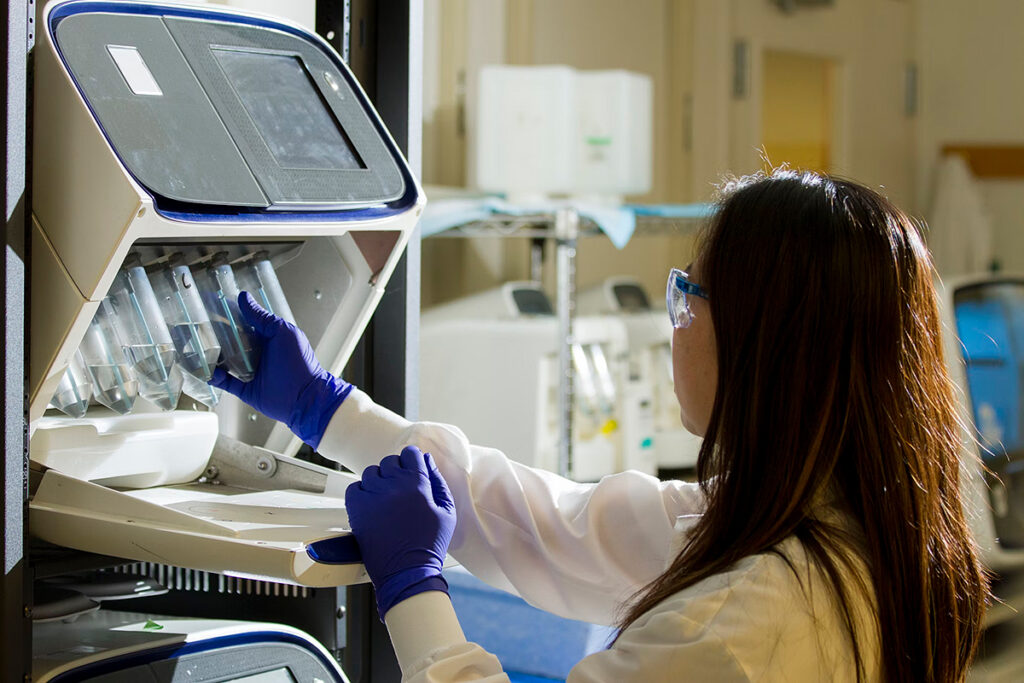Type I interferons (IFN) suppress the replication of both DNA and RNA viruses and affect the activation of immune cells, accelerating the elimination of the virus from the body.
Several clinical studies have shown only a slight effect of interferon in treating patients with COVID-19. A possible reason is that the coronavirus can suppress the protective response of interferon. However, this is not true for all strains of coronavirus. So, Omicron has a lower ability to resist the reaction of interferon.
Most often, coronavirus enters the body through the nasal epithelium. On the other hand, COVID-19 patients shed the virus from the nasopharynx, contributing to the spread of the virus.
- Scientists at Imperial College London have shown that Omicron replicates rapidly in human respiratory cell cultures, allowing Omicron to infect more cells in the respiratory epithelium and be more infectious at lower doses.
- Scientists at the University of Hong Kong have shown that Omicron replicates faster in the upper respiratory tract than other coronavirus strains but replicates less efficiently in the lungs, explaining the decrease in the severity of Omicron.
- Respiratory and olfactory epithelial cells at deficient levels express ACE2, the primary receptor for coronavirus entry into the cell. However, the penetration of the virus into the body is facilitated by another protein – NRP1, which enhances the interaction of the coronavirus with ACE2. NRP1 may increase the infectivity of Omicron.
In response to the virus, the nasal epithelium triggers an antiviral response of type I and III interferons. On the other hand, the introduction of IFN-I/III enhances the antiviral response. Interferon-α-2b spray can prevent respiratory infections caused by influenza, parainfluenza, and adenoviruses. Since the highest viral loads are found in the upper respiratory tract, suppressing coronavirus in the nasopharynx may reduce virus shedding and spread.
Interferon-α2b to Treat Omicron
Chinese scientists investigated the effectiveness of interferon-α-2b spray for the treatment of Omicron. The study involved 871 patients with confirmed coronavirus strain Omicron:
- 413 patients were allocated to the IFN-α-2b spray group;
- 458 patients – in the control group.
In the experimental group, recombinant IFN-α-2b was sprayed onto the posterior pharyngeal wall, tonsils, and oral lesions every 6 hours for 7 days – 3 spray doses per day, about 1.2 million IU/day. Patients abstained from food and water for 15 minutes after applying the spray.
All participants had mild or asymptomatic coronavirus. All participants received symptomatic treatment, including non-steroidal anti-inflammatory drugs, cough medicines, and traditional Chinese medicine.
Research Results
Interferon-α-2b spray reduced virus shedding time when administered within 3 days of COVID-19 onset. IFN did not cause side effects.
Virus isolation time:
- with the introduction of IFN up to 3 days after the onset of COVID-19 is 10.4 days;
- with the introduction of IFN later than 3 days – 13.6 days;
- without IFN – 2.6 days.
IFN-α-2b spray significantly improved viral clearance among vaccinated, non-obese, non-smokers, and asymptomatic patients.
Conclusion
Interferon-α-2b spray reduced virus isolation time by 2-3 days when applied within three days of the first positive coronavirus test. The best effect is in vaccinated patients. The time of vaccination did not play a role.
Early use of IFN-α-2b spray shortens virus isolation, but delayed use may increase the infectious period.
When administered intramuscularly, IFN-α can cause adverse reactions such as fever, muscle pain, chills, and other flu-like symptoms. Unlike intramuscular injection, the interferon-α spray does not cause side effects.
Useful article, necessary information? Share it!
Someone will also find it useful and necessary:



